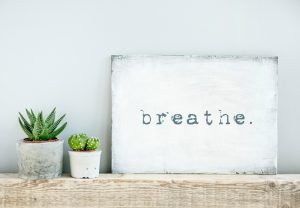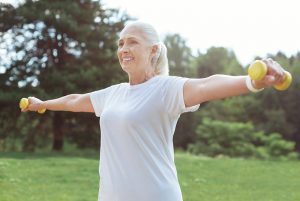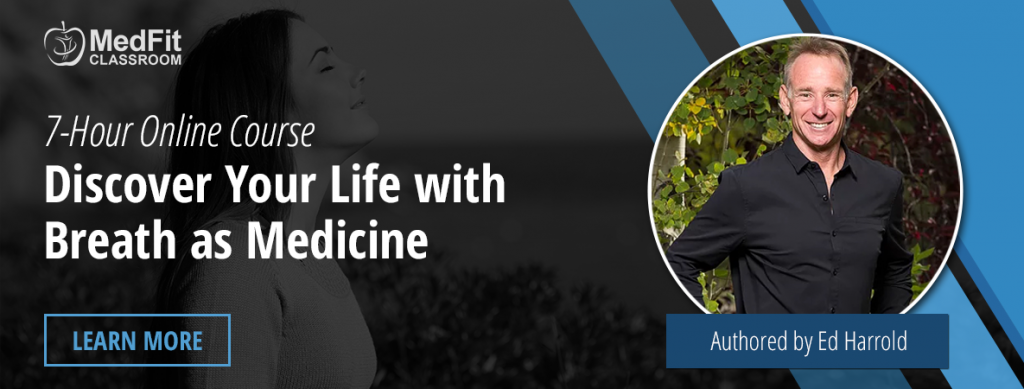Breathe To Train The Body AND The Brain
When I first entered the field of performance coaching, terms like building resilience, develop focused attention, manage sustainable energy levels and strengthen our emotional intelligence were sought after areas of development not only in elite athletic training; but also, executive development.
As the demands of life rise for our clients, the best way we can support them is by designing health and fitness routines that combine all the elements of health and performance. Our clients are seeking our expertise on how to “feel” better physically, mentally and emotionally. And the one tool that links the mind, body and brain is BREATH.
Mouth Breathing Vs. Nasal Breathing

Mouth and nasal breathing differ dramatically in how they physiologically support the body at rest and in exercise. How you breathe determines many factors, including how well you’re oxygenating your cells, whether you’re burning fat or sugar, the release of hormones, heart rates, CO2 tolerance, lactic acid build-up, digestive function and so much more.
Our bodies need a balance of oxygen and carbon dioxide to function properly. Only nasal breathing can do this correctly and only nasal diaphragmatic breathing can produce nitric oxide, which is a bronchodilator and vasodilator that helps to lower your blood pressure and significantly improves oxygen being absorbed by the lungs.
Breathing rates and patterns are communicating the response of our cardiovascular, brain and autonomic nervous system (ANS). Specifically, the length, depth & pace of our nasal or mouth breathing communicates sympathetic or parasympathetic responses from our ANS. Nasal diaphragmatic breathing is how we stimulate the vagus nerve; the braking system of our parasympathetic nervous system. By controlling the length, depth and pace of our nasal breathing, we train both the body AND the brain into physical, mental and emotional health.
Coherent Breathing Strategies

Elevated heart rates in daily life and exercise are contributing, if not causing, cardiovascular disease. When heart rates are high, we are in the “fight or flight response.” We process thoughts in a hyper-vigilant state of being in the amygdala and they get stuck in “distress” thinking patterns. We “perceive” threat in this system and are designed to take action against this perceived threat. Chronic use of this system actually damages parts of the brain used to self-regulate emotions and well as think critically and rationally (Gross, 2013).
Nasal breathing patterns have a positive effect on our physiology. When proper nasal breathing rates are in place, we take excessive pressure off our cardiovascular system with lower heart rates and increased heart rate variability. As our respiratory system strengthens, we can control the length, depth and pace of our breath (Telles, Singh, & Balkrishna, 2011).
Slowing the pace of the nasal inhale stabilizes the rise in heart rate. Lengthening the exhale longer than the inhale allows the heart rate to drop even further. The depth of our diaphragmatic breathing allows us to reach those parasympathetic nerve endings in the lower lobes of our lungs along with serotonin receptors. When heart rates are lower in movement, not only do we have more power of our physical selves but also, our mental & emotional selves to clear destructive emotions from the mind and harness these emotions as our fuel for training.
Neurocardiology studies the effects of our thoughts and feelings on the heart and brain. Heart rates play an important role in facilitating higher cognitive functions, creating emotional stability and facilitating states of calm. The lower our heart rate and higher our heart rate variability, the stronger our ability to self-regulate (Appelhans, & Luecken, 2006).
I love designing routines around the cycle of breath supporting cardiac coherence. Imagine our inhale is where we set our plan of action; it’s our mental intention of what we are attempting to do. The exhale is the manifestation in action of the mental intention. The space between our inhale and exhale provides valuable tools for concentration and execution of skills. By controlling the breath, brain and body in this way, we balance the sympathetic and parasympathetic response. With more parasympathetic activity, we build resilience and foster strong mental focus to execute our desire without distraction or fear.
Moderate Exercise to Strengthen Vagal Tone

Tonic levels of aerobic exercise stimulate the vagus nerve and lower stress responses associated with “fight-or-flight” mechanisms. Tonic levels of low, moderate, and vigorous physical activity also improve heart rate variability (HRV), which is the measurement of variations within beat-to-beat intervals.
When it comes to the dose and intensity of your daily exercise, there is one important factor… mouth breathing through high intensity cardiovascular exercise lowers HRV and reduces vagal tone. The vagus nerve is ONLY stimulated through nasal diaphragmatic breathing. Therefore, I’d like to emphasize the importance of working out at a level of exertion where you can maintain steady breathing rates and patterns (De Meersman, 1993).
Now, here’s the kicker that ties it all together. The vagus nerve regulates the parasympathetic system of the autonomic nerve system in the expression of emotion. In other words, vagal tone regulates the part of the brain responsible for our emotions (Porges, Doussard-Roosevelt, & Maiti 1994). Use breath rates to control your heart rates strengthens vagal tone and parasympathetic activity. The stronger our parasympathetic, the more resilient we are. The more resilient we are, the stronger our ability to handle the endurance event we call life!
Exercise by its’ nature is a sympathetic action. By that I mean, our heart rates rise, we breathe faster and move the limbs of our bodies in support of the physical activity. What I want folks to learn is you can receive more of a parasympathetic (relaxation) response within the sympathetic activity that is “exercise.” In doing so, you will enjoy tremendous benefits that will not only improve your health but dramatically improve exercise performance.
Breath as Medicine: A 7 hour online course is live on MedFit Classroom!

References
- Appelhans, B., and Luecken, L. (2006). Heart rate variability as an index of regulated emotional responding. Rev. Gen. Psychol.10, 229–240. doi: 10.1037/10892680.10.3.229 http://psycnet.apa.org/?&fa=main.doiLanding&doi=10.1037/1089-2680.10.3.229
- Gross, D. (March 19, 2013). Effects of Stress on the Hippocampus. Retrieved from http://drgailgross.com/academia/effects-of-stress-on-the-hippocampus/
- Lovell, M. (2010). Adrenal fatigue & overtraining in the athlete. The Nutrition Practitioner, 11(1). Retrieved from http://cnelm.co.uk/
- Telles, S., Singh, N., & Balkrishna, A. (2011). Heart rate variability changes during high frequency yoga breathing and breath awareness. BioPsychoSocial Medicine, 5(4). doi:10.1186/1751-0759-5-4
- De Meersman, R. E. (March 1993). Heart rate variability and aerobic fitness, American Heart Journal, March 1993Volume 125, Issue 3, Pages 726–731
- Porges, S.W., Doussard-Roosevelt J.A., and Maiti A.K. (1994). Vagal tone and the physiological regulation of emotion. Retrieved from https://www.ncbi.nlm.nih.gov/pubmed/7984159
